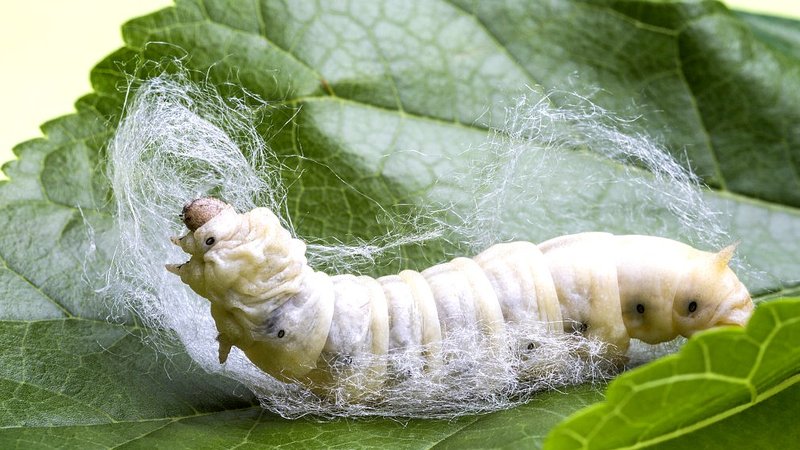
Whether you’re a hobbyist sharing your silkworms with a friend or a professional in the silk industry needing to ship them, knowing how to transport silkworms safely is essential. You want to ensure they arrive healthy and happy, ready to contribute to their next chapter. Let’s dive into some practical tips to help you transport silkworms without a hitch!
Understanding Silkworm Needs
Transporting silkworms safely starts with understanding their basic requirements. Silkworms thrive in specific conditions: they love warmth, humidity, and a steady food supply. Think of it like planning a camping trip—you need to make sure you have the right gear and essentials to keep your group safe and comfortable.
**Temperature** is crucial. Silkworms prefer a cozy environment around 70-80°F (21-27°C). If the temperature dips too low or rises too high, they can become stressed or even die. Keeping them at a stable temperature is like ensuring you have a warm blanket during a chilly night.
**Humidity** also plays a significant role. Aim for humidity levels of about 60-80%. Too much dryness can lead to dehydration, while too much moisture can cause mold—a nightmare for your silkworms. Think of humidity as the air you breathe—you want it just right, not too stuffy and not too dry.
Finally, you’ll need a regular food source. Silkworms primarily eat mulberry leaves, so packing enough of these for the journey is essential. Imagine going on a long trip without snacks—it wouldn’t be much fun!
Choosing the Right Container
Now that you know what silkworms need, the next step is finding the right container for your little passengers. Choosing the right container is like picking out a comfy travel bag; it can make all the difference in how they fare on the journey.
Look for a container that’s breathable but also provides protection. A simple cardboard box with holes for ventilation works well for short trips. For longer journeys, consider using a plastic container with ventilation holes. Just like a good suitcase, it should be sturdy enough to protect the silkworms from bumps and drops.
Make sure to line the bottom of the container with a soft material, like paper towels. This will provide some cushioning and absorb moisture if needed. It’s like having a cushy seatbelt for your silkworms, keeping them comfy and secure.
Finally, don’t overcrowd the container. Silkworms need space to move around, and cramming too many inside can lead to stress or injury. Think of it like sharing a car ride: too many people in the backseat can lead to a squished, uncomfortable trip.
Maintaining Temperature and Humidity During Transport
Keeping the right **temperature** and **humidity** during transport is crucial to keeping your silkworms healthy. If conditions change suddenly, you might find your silkworms arriving in less-than-stellar shape!
If you’re traveling by car, plan your route ahead of time to minimize time spent in a hot or cold environment. The sun can heat up the inside of a car quickly, so use a sunshade or keep the windows cracked (without letting in too much cold air) to maintain a balanced environment.
For longer distances, consider using an insulated cooler. These can help maintain stable temperatures and protect your silkworms from extreme weather. Toss in a warm rice bag or a cold pack, depending on the season, to help manage the temperature. Just remember to monitor it regularly—like checking a watch during a long trek.
To manage **humidity**, place a damp paper towel in the container or cooler. Just be careful not to soak it—excess moisture can lead to mold growth. It’s a balancing act, much like managing an umbrella on a rainy day!
Feeding and Caring for Silkworms During Transport
You might be wondering what to do about feeding your silkworms while on the move. Keeping them fed and hydrated is key to a successful transport.
If your trip is short—say, just a few hours—you may not need to provide food. They can go without eating for that duration. However, if you’re traveling longer, it’s best to pack some mulberry leaves or a silkworm feed that’s easy to transport. Think of it as packing snacks for a road trip—everyone gets cranky when they’re hungry!
To keep their environment comfortable, check on their moisture levels regularly. A quick spray of water (just a light mist) can help, but remember, you want to avoid soaking them. It’s like giving your plants a drink—just enough to keep them happy.
Also, ensure you handle the container carefully. Avoid jostling or shaking it, as this can stress the silkworms. If they were in a car with you, you wouldn’t want to hit too many bumps—keep it smooth!
Timing Your Transport
Timing is everything when it comes to transporting silkworms. If you’re shipping them, planning your send-off can prevent a lot of stress. Imagine scheduling a long flight; the best times to travel are when the weather is mild, and crowds are thin.
If you can, avoid transporting silkworms during extreme temperatures—either really hot or cold days. Mid-morning or late afternoon often has milder temps, making it a good time for travel. If you’re shipping them, aim for a day when the forecast looks stable.
For air transport, consider choosing overnight shipping. This minimizes the time your silkworms are in transit, reducing the chance of them experiencing uncomfortable temperatures or conditions. It’s like taking the express lane instead of the scenic route—quicker often means less hassle!
Assessing Your Silkworms After Transport
Once you’ve arrived at your destination, it’s time to check on your silkworms. Just because the journey is over doesn’t mean the work is done! Assessing their condition is crucial to ensure they’ve arrived healthy.
Look for any signs of stress or damage. Are they moving around? Are their bodies intact? If you see any sluggish behavior, take note and offer extra care. You might consider giving them fresh mulberry leaves right away—think of it as a welcome-home feast!
Once settled, give them a day or two to acclimate before introducing them to their new environment. This process can help them recover from the journey and reduce any potential stress from changing habitats. Just like us, they’ll need a little time to relax after a long trip.
Final Thoughts on Safe Silkworm Transport
Transporting silkworms safely over long distances doesn’t have to be a daunting task. By understanding their needs, choosing the right container, maintaining proper conditions, and carefully managing feeding and timing, you can help ensure they arrive safe and sound.
Remember, it’s all about providing a comfortable environment for your silkworms. Planning, preparation, and a little extra care go a long way. So, whether you’re sharing your silkworms with a friend or shipping them for business, keeping these tips in mind will help make the journey smoother for both you and your tiny travelers. Safe travels!

